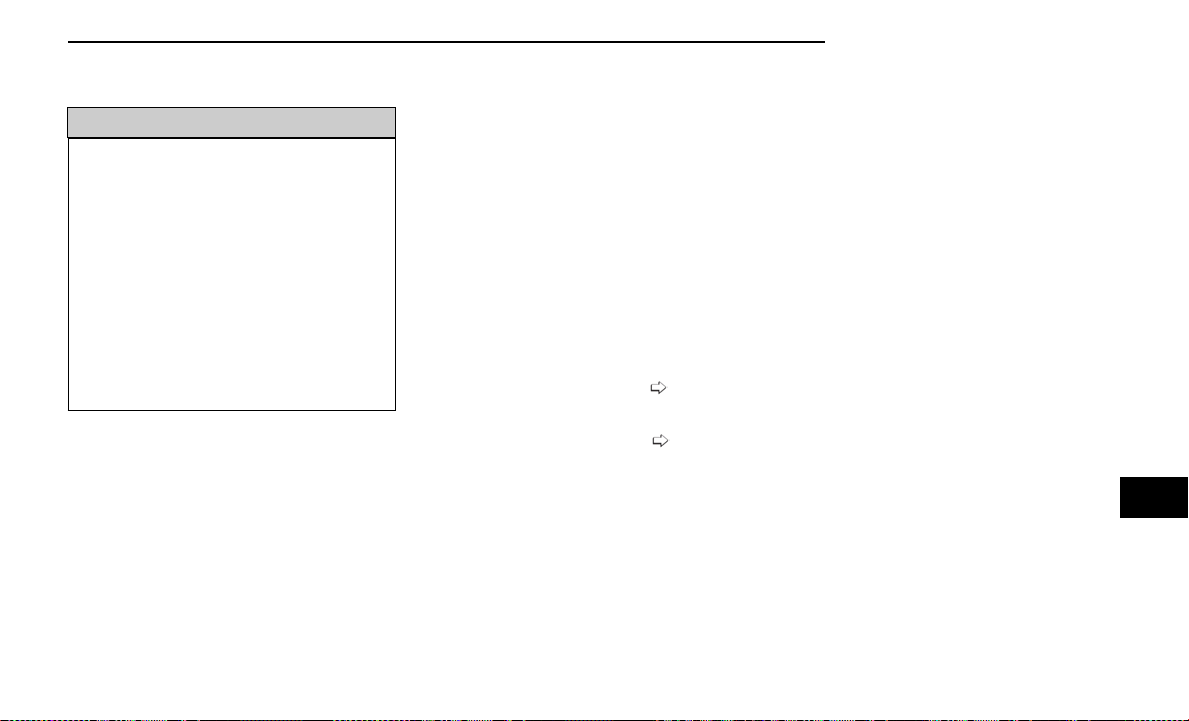Loading ...
Loading ...
Loading ...

COOLING SYSTEM
WARNING!
•
You or others can be badly burned by hot engine
coolant (antifreeze) or steam from your radiator. If
you see or hear steam coming from under the
hood, do not open the hood until the radiator has
had time to cool. Never open a cooling system
pressure cap when the radiator or coolant bottle is
hot.
•
Keep hands, tools, clothing, and jewelry away from
the radiator cooling fan when the hood is raised.
The fan starts automatically and may start at any
time, whether the engine is running or not.
•
When working near the radiator cooling fan, dis-
connect the fan motor lead or turn the ignition to
the OFF position. The fan is temperature controlled
and can start at any time the ignition is in the ON
position.
Engine Coolant Checks
Check the engine coolant (antifreeze) protection every
12 months (before the onset of freezing weather, where
applicable). If the engine coolant is dirty, the system
should be drained, flushed, and refilled with fresh
Organic Additive Technology (OAT) coolant (conforming
to MS.90032) by an authorized dealer. Check the front
of the A/C condenser for any accumulation of bugs,
leaves, etc. If dirty, clean by gently spraying water from
a garden hose vertically down the face of the
condenser.
Check the engine cooling system hoses for brittle rub-
ber, cracking, tears, cuts, and tightness of the connec-
tion at the coolant recovery bottle and radiator. Inspect
the entire system for leaks. DO NOT REMOVE THE
COOLANT PRESSURE CAP WHEN THE COOLING SYSTEM
IS HOT.
Cooling System — Drain, Flush And Refill
NOTE:
Some vehicles require special tools to add coolant prop-
erly. Failure to fill these systems properly could lead to
severe internal engine damage. If any coolant is needed
to be added to the system please contact an authorized
dealer.
If the engine coolant (antifreeze) is dirty or contains
visible sediment, have an authorized dealer clean and
flush with Organic Additive Technology (OAT) coolant
(conforming to MS.90032).
For the proper maintenance intervals
page 290.
Selection Of Coolant
Refer to Engine Fluids And Lubricants page 345.
NOTE:
•
Mixing of engine coolant (antifreeze) other than
specified Organic Additive Technology (OAT) engine
coolant, may result in engine damage and may
decrease corrosion protection. OAT engine coolant is
different and should not be mixed with Hybrid
Organic Additive Technology (HOAT) engine coolant
or any “globally compatible” coolant. If a non-OAT
engine coolant is introduced into the cooling system
in an emergency, the cooling system will need to be
drained, flushed, and refilled with fresh OAT coolant
(conforming to MS.90032), by an authorized dealer
as soon as possible.
•
Do not use water alone or alcohol-based engine
coolant products. Do not use additional rust inhibi-
tors or antirust products, as they may not be com-
patible with the radiator engine coolant and may
plug the radiator.
•
This vehicle has not been designed for use with pro-
pylene glycol-based engine coolant. Use of propyl-
ene glycol-based engine coolant is not
recommended.
•
Some vehicles require special tools to add coolant
properly. Failure to fill these systems properly could
lead to severe internal engine damage. If any cool-
ant is needed to be added to the system please con-
tact an authorized dealer.
Adding Coolant
Your vehicle has been built with an improved engine
coolant (OAT coolant conforming to MS.90032) that
allows extended maintenance intervals. This engine
coolant (antifreeze) can be used up to 10 years or
150,000 miles (240,000 km) before replacement. To
prevent reducing this extended maintenance period, it
is important to use the same engine coolant (OAT cool-
ant conforming to MS.90032) throughout the life of
your vehicle.
Please review these recommendations for using
Organic Additive Technology (OAT) engine coolant that
meets the requirements of the manufacturer Material
Standard MS.90032.
SERVICING AND MAINTENANCE 305
8
Loading ...
Loading ...
Loading ...